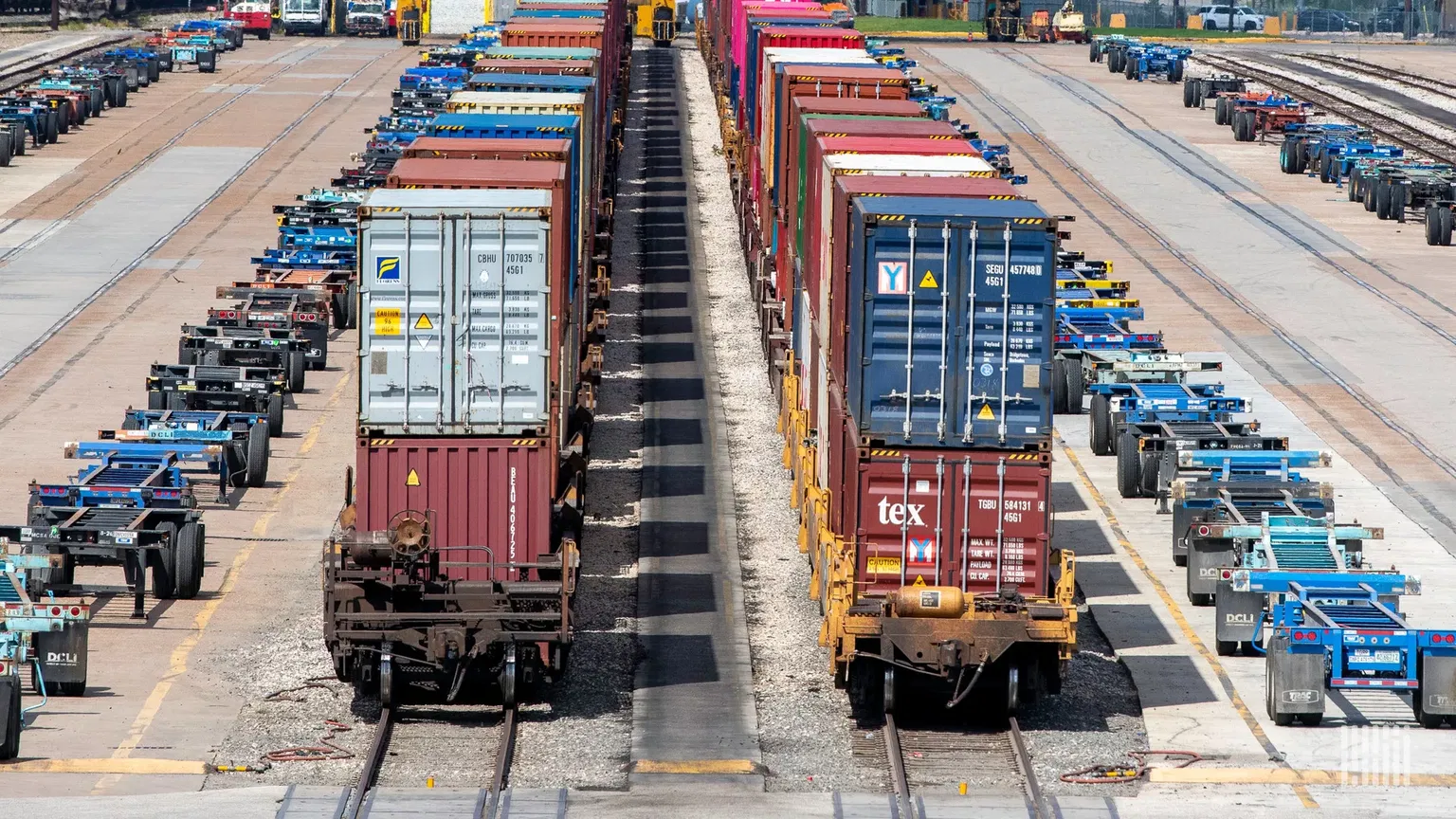Impact of Economic Factors on Rail Freight
The dynamics of rail freight transportation are facing significant shifts, fueled by the ongoing economically turbulent atmosphere. Understanding these developments can illuminate the complexities inherent in logistics and transportation sectors.
Viktiga insikter:
- Mixed Performance in U.S. Rail Traffic: Intermodal traffic saw a downturn, dropping by 2.9% in June 2025 compared to the previous year. Meanwhile, carload traffic managed a 2.1% rise.
- Effect of Economic Fluctuations: Uncertainty in economic indicators like manufacturing and consumer spending is influencing freight volumes.
- Sector Variability: Not all sectors are created equal—grain experienced substantial growth while chemicals encountered slight declines, shedding light on a bumpy recovery journey.
- Unsteady Outlook: Predictions for the second half of 2025 indicate continued volatility in freight volumes due to complex economic signals.
Freight Traffic Trends Amid Economic Challenges
A recent assessment reveals that the uncertain economic context is affecting intermodal and carload traffic differently, creating a scenario where recovery can be uneven.
Den Association of American Railroads recently reported on the divergent paths of the U.S. economy, caught between optimism and apprehension. These economic variables, including consumer spending habits and global supply chain disruptions, are continuously shaping the landscape of rail freight.
Declining Intermodal Traffic
Intermodal traffic—the shipment of cargo in intermodal containers or trailers—witnessed a significant drop of 2.9% in June 2025 from the previous year. This decline is mainly tied to global trade tensions and persistent logistic bottlenecks, hindering international shipments. However, a silver lining was noted as the second quarter of 2025 indicated a 2% year-over-year increase in intermodal traffic, hinting at potential resilience in a challenging environment.
Carload Traffic Dynamics
In contrast, carload traffic saw a steady uptick of 2.1% year-on-year in June 2025, marking sustained growth for four consecutive months. Particularly, the second quarter highlighted a noticeable 4.8% increase in carloads compared to Q2 of 2024, making it the most significant quarterly advantage since Q3 2021.
Performance Across Different Sectors
Coal, representing a notable segment of the rail industry, exhibited a modest recovery with a 2.4% increase in carloads for June 2025. Even as coal adjusts from previous lows, some sectors like chemicals faced slight contractions, indicating mixed signals for the sector moving forward. The challenge remains despite a 1.6% rise in year-to-date chemical carloads driven primarily by steady manufacturing activities.
Grain Sector Success
On a brighter note, the grain sector demonstrated exceptional performance, with a remarkable 11.3% increase in carloads attributed primarily to rising U.S. exports. This growth was driven largely by surges in corn exports, even as soybeans and sorghum faced declines.
Industrial Products and Economic Indicators
The broader category of industrial products, which includes a diverse range of goods, recorded a marginal growth of 0.4% in June 2025. Conversely, year-to-date figures painted a somewhat grim picture with a decline of 0.3%, underscoring the sporadic nature of industrial outputs.
The state of the labor market is another crucial aspect impacting logistics. Job gains have shown variability, with 147,000 new jobs added in June, contributing to consumer spending patterns. However, unemployment indicators seem to display vulnerability, forming a cautious observation amid mixed signals in job openings.
Consumer Spending and Its Impact
Consumer spending, responsible for nearly 70% of U.S. GDP, has been another focal point; preliminary data from May indicated a mere 2.2% year-over-year inflation-adjusted growth—marking the smallest increment in a year. Should this slowdown persist, adverse effects on rail volumes, particularly in intermodal traffic, seem likely.
Manufacturing Sector Challenges
The manufacturing sector remains in contraction territory with the ISM Manufacturing PMI stuck below 50%. The ongoing contraction spells challenges for rail freight, given that a significant portion of rail carloads is closely linked to manufacturing outputs. Furthermore, a weakening services sector could further dampen freight dynamics.
Trend Forecasting for Rail Freight
Looking ahead, the assessment from the Association of American Railroads suggests that the second half of 2025 will not offer much in terms of clarity. As freight volumes continue to be subject to a blend of supportive and restraining economic forces, logistics professionals must remain agile and informed.
Even with best reviews and insights, nothing quite compares to real-world experience. On the platform GetTransport.com, customers can conveniently book cargo transportation solutions that cater to varied needs. This empowers them to make insightful decisions without unwarranted costs or letdowns.
Genom att välja GetTransport.com, users can access a pool of affordable, international freight options. The platform aims to simplify logistics with great convenience and transparency, making transportation seamless regardless of whether the need is personal or commercial.
In summary, rail freight is currently navigating through a complex set of challenges that highlight the interdependence of economic factors and transportation. As sectors experience varied performances, it’s crucial for stakeholders in logistics to stay informed and adaptive to the constantly changing environment. For next-level cargo transportation solutions, consider GetTransport.com for its reliability and extensive offerings—your one-stop service for simplifying logistics effectively. Bok.

 Godstransporter på järnväg: Att navigera genom ekonomiska utmaningar">
Godstransporter på järnväg: Att navigera genom ekonomiska utmaningar">